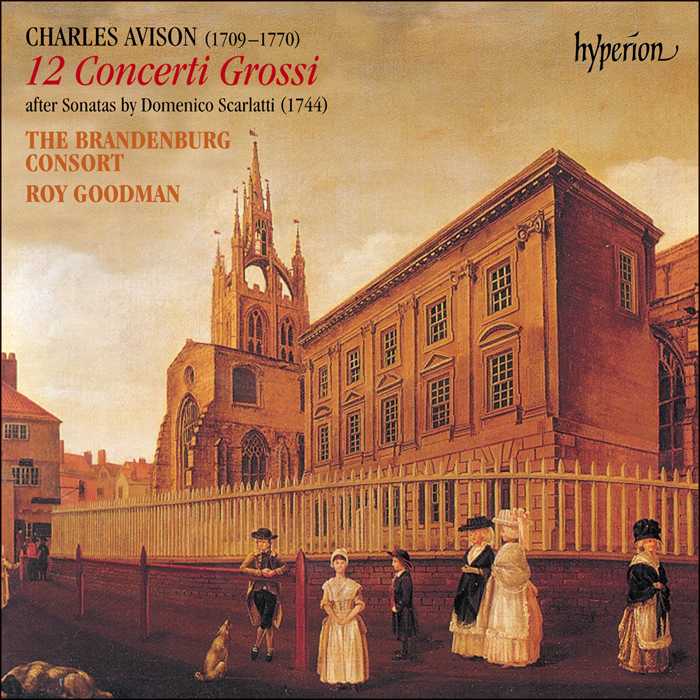Avison: Concerti Grossi – after Scarlatti
The Brandenburg Consort, Roy Goodman (conductor)
CDA66891/2
By the 1740s the concerto grosso had become a peculiarly English type of orchestral music. It was originally devised by Alessandro Stradella and Arcangelo Corelli in Rome in the 1670s and ’80s as a type of polychoral music suitable for spatially separated galleries in churches, or sometimes carts or platforms in outdoor secular entertainments, but by the second decade of the eighteenth century, when Corelli’s Op 6 Concertos were published, it had been modified to serve a different purpose. The concertino of two violins, cello and continuo, instead of being separated from the concerto grosso or string orchestra, was now taken by the leaders of the respective sections. At this point, the concerto grosso was largely abandoned in Italy in favour of the newer and more virtuosic three-movement solo concerto, but its career was only just beginning north of the Alps. In England, in particular, the ‘grand concerto’ (as it was often known in English) was the main type of orchestral music far into the century; native composers were still writing examples in the 1770s and ’80s, long after J C Bach, C F Abel and the Earl of Kelly had popularized the German classical symphony in London.

